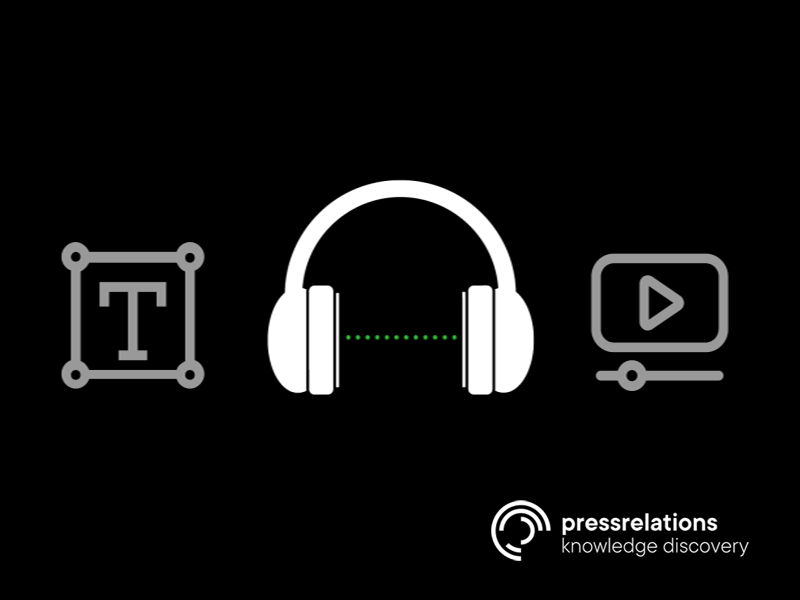When it comes to digital content, audio is the growth trend. But is it worth pursuing from a communications standpoint? As audio’s share of the communications mix becomes bigger, organizations should start looking for optimal ways to take advantage of this development.
If you are ready to leverage the power of audio content and voice-activated marketing and PR tools, here are four key strategies to turn audio into a successful component of your communication and marketing practices.
Audio Ads
With 24 million listeners streaming podcasts and music every week, audio presents a tremendous opportunity for brands to unlock their true potential. Audio ads allow you to target your audiences precisely with relevant messages — targeting options include interests, demographics, geolocation, device type, content preferences, and more. Audio ads have a 24% higher recall rate than traditional display ads and data shows them to be highly effective and engaging.
Audio ads are currently available only on streaming services, but will soon be integrated into virtual assistants and intelligent speakers. Moreover, you get a robust brand response when audiences get exposed to viewable and audible advertisements.
While video remains the most effective choice for hooking and keeping an audience, you can leverage audio ads to amplify your other marketing efforts.
Podcasts
The latest Edison Research and Triton Digital survey reports that over one-third of Americans listen to podcasts regularly. 36% of women and 39% of men listen to podcasts every month, making it a balanced medium to reach intended audiences.
As podcast demand continues to grow, businesses realize the advantages of incorporating podcasts for internal and external engagement. And marketers — specifically content and brand marketers — are taking note.
The sheer freedom listeners have today to consume podcasts whenever and wherever they want is incomparable to any other content form. People can also efficiently multitask while keeping themselves engaged with podcasts, increasing interaction levels. Companies that aren’t riding the podcast train are going to get left behind.
Voice Search Optimization (VSO)
The fast-growing use of voice-activated technologies and voice search is what makes audio content an essential part of every marketing strategy. Over 66 million Americans own a smart speaker and 53% of them use one or both of these tools to perform voice searches daily. Currently, 48% of consumers prefer voice search mechanisms for general web search, and by 2023 8 billion digital voice assistants will be in use – acting as a catalyst for even more people to retire traditional text-based search.
This is where Voice Search Optimization comes in – the process of optimizing content to rank in voice search results. Developing voice capabilities, implementing innovative ways for improving customer service, and building voice assistant applications, e.g. Google Actions, are some examples of how companies can use voice-activated technology effectively.
Sonic Branding
Sonic branding involves the songs, jingles, and sounds directly associated with a product, service, or brand. The connotation is not created organically by consumers; instead, the brand adopts or develops it as part of a strategy that allows its audience to associate those sounds and make them resonate with the brand.
Sonic logos can range from simple mnemonics and non-lyrical jingles to catchy tunes focusing on communicating solid messages to the intended audience. Studies show that sounds and music lead to better brand recognition and recall while leaving a lasting impression. No wonder MasterCard spent millions on sonic branding last year.
Sonic branding is essential for building emotional connections with audiences, especially in a world that is moving gradually towards sound-based engagement and interactions.
The Challenges of Producing and Managing Audio Content
Communications professionals face a variety of challenges in producing, managing, and distributing audio content. While it is possible to monitor audiences, collect feedback, and leverage listening data, crucial metrics such as conversions and impressions aren’t easy to track. Discoverability is another audio content challenge most communications specialists face as they ensure their content finds its way to the intended audiences.
The lack of measurement standards that would help calculate the return on investment into audio remains the biggest obstacle to wide-scale adoption. But, it is only a matter of time before these tools are developed and audio content overtakes video in its importance to brand awareness and loyalty.
This article is part of a series of the implications of the increasing popularity of audio-driven content on communications. This post was first published on the PRSA-NCC blog.
Please read the other posts in the series:
What Does the Rise of Audio Content Mean for Communicators?
Emerging Media Measurement Standards for Audio Content



